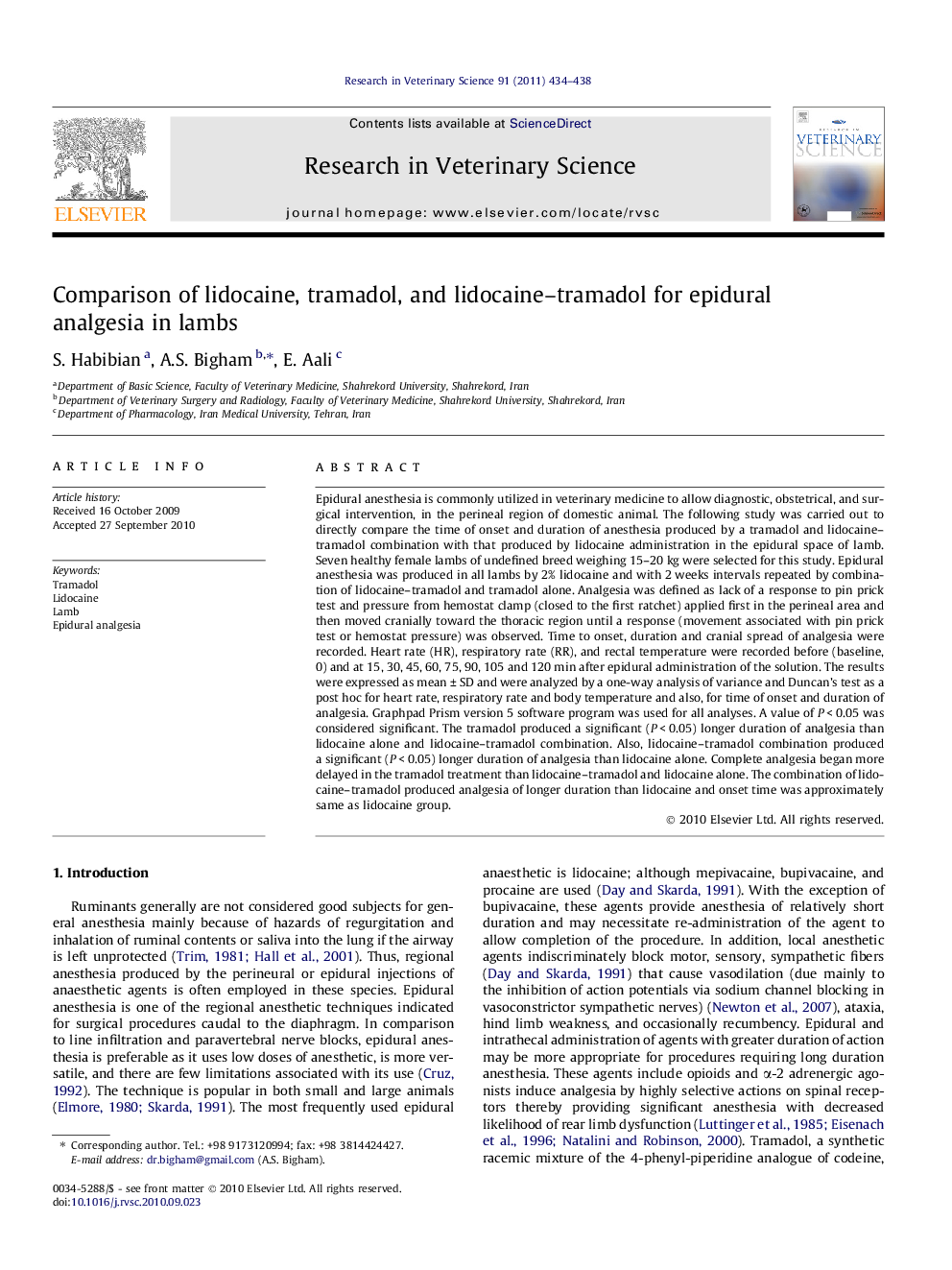| Article ID | Journal | Published Year | Pages | File Type |
|---|---|---|---|---|
| 2455652 | Research in Veterinary Science | 2011 | 5 Pages |
Epidural anesthesia is commonly utilized in veterinary medicine to allow diagnostic, obstetrical, and surgical intervention, in the perineal region of domestic animal. The following study was carried out to directly compare the time of onset and duration of anesthesia produced by a tramadol and lidocaine–tramadol combination with that produced by lidocaine administration in the epidural space of lamb. Seven healthy female lambs of undefined breed weighing 15–20 kg were selected for this study. Epidural anesthesia was produced in all lambs by 2% lidocaine and with 2 weeks intervals repeated by combination of lidocaine–tramadol and tramadol alone. Analgesia was defined as lack of a response to pin prick test and pressure from hemostat clamp (closed to the first ratchet) applied first in the perineal area and then moved cranially toward the thoracic region until a response (movement associated with pin prick test or hemostat pressure) was observed. Time to onset, duration and cranial spread of analgesia were recorded. Heart rate (HR), respiratory rate (RR), and rectal temperature were recorded before (baseline, 0) and at 15, 30, 45, 60, 75, 90, 105 and 120 min after epidural administration of the solution. The results were expressed as mean ± SD and were analyzed by a one-way analysis of variance and Duncan’s test as a post hoc for heart rate, respiratory rate and body temperature and also, for time of onset and duration of analgesia. Graphpad Prism version 5 software program was used for all analyses. A value of P < 0.05 was considered significant. The tramadol produced a significant (P < 0.05) longer duration of analgesia than lidocaine alone and lidocaine–tramadol combination. Also, lidocaine–tramadol combination produced a significant (P < 0.05) longer duration of analgesia than lidocaine alone. Complete analgesia began more delayed in the tramadol treatment than lidocaine–tramadol and lidocaine alone. The combination of lidocaine–tramadol produced analgesia of longer duration than lidocaine and onset time was approximately same as lidocaine group.
